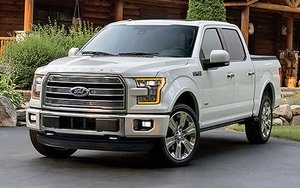research
Jeep, Disney, Levi Strauss, Ralph Lauren, Ford Named Most Patriotic Brands
- by Tanya Gazdik , June 27, 2016

With Independence Day around the corner, Brand Keys is revealing the brands that consumers consider the most patriotic.
Disney joins Jeep to lead the parade, followed by Levi Strauss, Ralph Lauren and Ford.
Issues regarding “patriotism” have been raised to even higher levels of debate than usual, partly due to it being an election year, says Robert Passikoff, founder and president of Brand Keys, Inc., the New York-based brand loyalty and emotional engagement research consultancy.
There is a difference between nationalism and patriotism, Passikoff tells Marketing Daily.
“Patriotism is a pride in one’s country and a willingness to defend it,” he says. “It is courage, it is freedom of speech, it is liberty. It is ultimately a set of values that people admire and that brands can use to better position themselves. But from the perspective of “nationalism,” which is what I think we’ve been seeing grow over the past decade, it is a belief in the superiority of one country over another and its usual form is aggressiveness. It’s a poor substitute for patriotism.“
advertisement
advertisement
Nationalism pits citizen against citizen, he says, while patriotism is rooted in values. Nationalism is rooted in rivalry.
“I don’t see many global brands playing up nationalism,” Passikoff says. “Heritage perhaps, but only in the most gentle of ways, and even then the focus will usually be on a value -- like German engineering -- that translates to a benefit that is benign as regards country yet leveragable as it regards category.”
Just wrapping your brand in the flag won’t do it anymore, he adds.
“There has to be a foundation to believe in the value,” Passikoff says. “Patriotism is not short, frenzied outbursts of emotion. When brands do that we call it promotion, not patriotism. Real patriotism is the quiet and steady dedication of a lifetime’s work, whether your’e a brand or a person.”
Election years, and holidays like Independence Day, give marketers opportunities to help citizens celebrate -- and brands leverage -- particular emotional values, he says.
“In this instance, brand advertising and social outreach typically features patriotic flag-waving and red-white-and-blue motifs,” Passikoff says. “Marketers cue the Sousa marches and Uncle Sam lookalikes in attempts to leverage patriotic emotions, and as this competition doesn’t end at the voting booth but includes the marketplace, all is done in the cause of increased sales.”
When it comes to engaging consumers, waving an American flag and having an authentic foundation for being able to wave the flag are entirely different things, and the consumer knows it, Passikoff says.
“More importantly, believability and authenticity are key to emotional engagement,” he says. “The more engaged a consumer is with a particular emotional value and the associated brand, the more likely they’ll act positively on that belief. Where a brand can establish real emotional connections, consumers are six times more likely to believe and behave positively toward the brand.”
It’s not surprising that many brands that consumers put in the top 50 are American icons, Passikoff says, which is confirmed by the movement up the list into the top 50 of modern-day examples including: Starbucks, J. Crew, Kraft, ABC-TV, Nike, and Old Navy.
The five brands appearing among 2015’s Most Patriotic Brands that showed significant engagement growth this year when it came to the value of “patriotism” included: Kellogg’s (+13), Converse (+11), McDonald’s (+10), Sam Adams (+9) and KFC (+5).
Brand Keys conducted a national sample of 4,750 consumers ages 16 to 65, who were asked to evaluate which of the 248 brands included this year were most resonant when it comes to “patriotism.” Consumers identified the following brands. Percentages indicate brands’ emotional engagement strength for the individual value of patriotism.
- Jeep/Disney (98%)
- Levi Strauss (96%)
- Ralph Lauren (95%)
- Ford (94%)
- Coca-Cola/Jack Daniels (93%)
- Harley Davidson/Gillette (92%)
- Apple/Coors/Sam Adams (91%)
- Gatorade/Amazon (90%)
- Zippo/Hershey’s/Kellogg’s (89%)
- American Express/Wrigley’s (87%)
- Colgate/Starbucks (88%)
- Coach/New Balance (86%)
- AT&T/Google (85%)
- Marlboro/Converse (84%)
- L.L. Bean/Facebook/J. Crew (83%)
- McDonald’s/Kraft/KFC (82%)
- John Deere/Louisville Slugger/Walmart/ABC TV/Nike / (81%)
- Craftsman Tools/GE/Wells Fargo (80%)
- 49ers/Cowboys/NFL/Patriots/MLB/NY Yankees/Wrangler/Wilson Sporting Goods/Old Navy (79%)


